
For those of us who worship at the altar of art and creativity, the career of Sister Corita serves as something like a proof that exciting and bracing art can come from any source. Another way of stating this is that if Sister Corita had never existed, the art-heads of the 1960s might have been obliged to invent her. Sister Corita was a peace activist, a nun, and a pop artist of considerable stature—all at the same time.
The woman who would later become known as Sister Corita was born Frances Kent in Fort Dodge, Iowa, in 1918, which incidentally means that she was 45 years old on the day that the Gulf of Tonkin Resolution was passed. Her large family moved to Los Angeles when she was young, where she would find educational mentors in a Catholic community of liberal nuns, namely the Sisters of the Immaculate Heart Order. They encouraged her to pursue art. In the 1950s she came upon an old silk screen at the art department of Immaculate Heart College and the wife of a Mexican silk-screen practitioner taught her how to clean and use it.
Her career can be said to have begun then; despite impressive productivity, however, it took about a decade for her work, which incorporated textual elements from the very start, to come into full maturity. The debt that Sister Corita owes artists like Andy Warhol and Peter Blake is evident everywhere, but it should be emphasized that the work of those two men lacked moral and spirital components that came to Sister Corita quite easily. When she zooms in on a package of Wonder Bread with emphasis on the words “Enriched Bread,” it’s almost impossible not to think of Jesus Christ. Warhol’s work has a moral element, for sure, but he wouldn’t have been as likely to meditate on the words wonder, enriched, and bread in the same way. (Warhol was only interested in one kind of “bread”: money!)
In 1967 she said, “I started early putting words into my prints, and the words just got bigger and bigger.” That year the Morris Gallery in New York hosted a show dedicated to her prints. By this time she was a “card-carrying” member of the peace movement; she was quoted as saying, “I’m not brave enough not to pay my income tax and risk going to jail, but I can say rather freely what I want to say in my art.”
After a lifetime of association with the Sisters of the Immaculate Heart of Mary, she resigned from the order in 1968, in part because of the unusual demands her sudden celebrity had brought. It’s fascinating to watch her work get progressively darker through the 1965-1970 period. I marvel at the sheer balls it would take to put together a red, white, and blue canvas with the words assassination and violence prominently represented and call it American Sampler—I just know I don’t have them!
For a good overview of her work, by all means do consult Come Alive! The Spirited Art of Sister Corita by Julie Ault. The Corita Art Center has a terrific collection of her images as well.
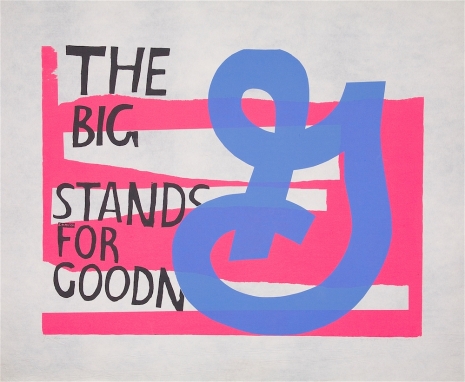
For Eleanor, 1964
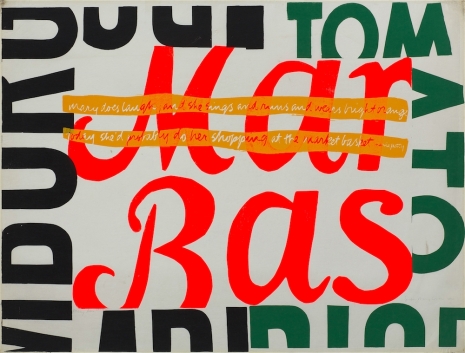
Mary Does Laugh, 1964
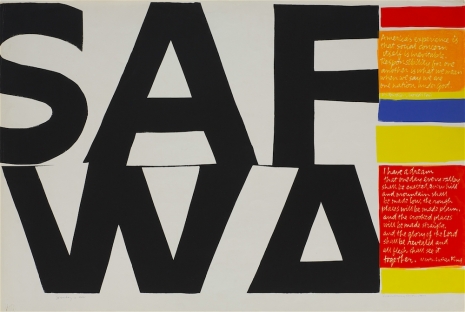
Someday Is Now, 1964
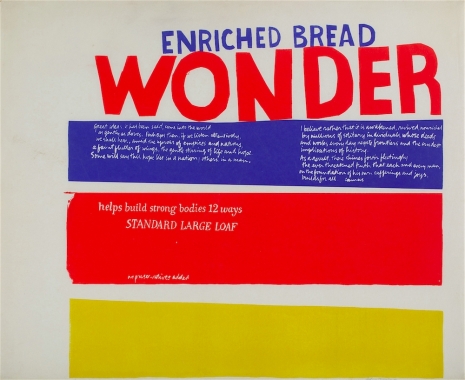
Enriched Bread, 1965

Power Up, 1965 (this is made up of 4 panels)
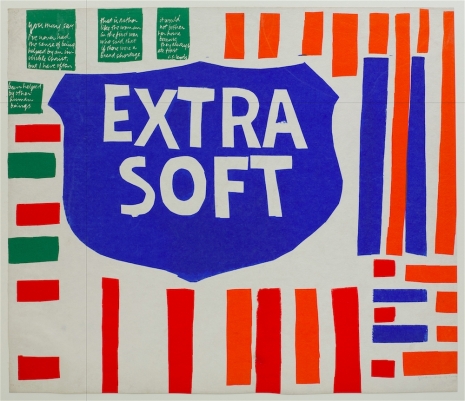
Bread and Toast, 1965

Workpower, Air Conditioner, 1965

Who Came Out of the Water, 1966

Questions and Answers, 1966
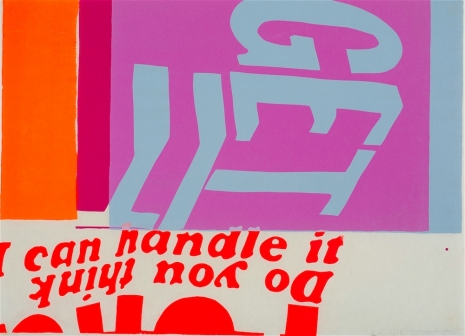
I Can Handle It, 1966

That Man Loves, 1967

Come Alive, 1967
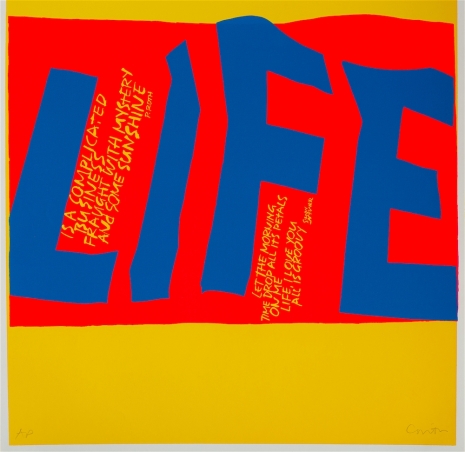
Life Is a Complicated Business, 1967
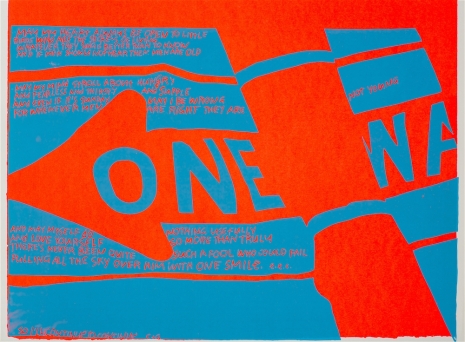
One Way, 1967
The next four panels from 1968 form a phrase, taken from e.e. cummings.



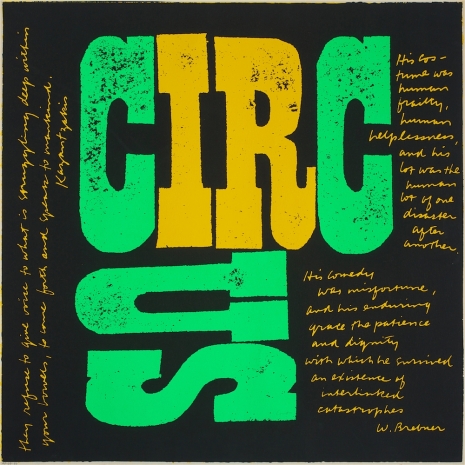
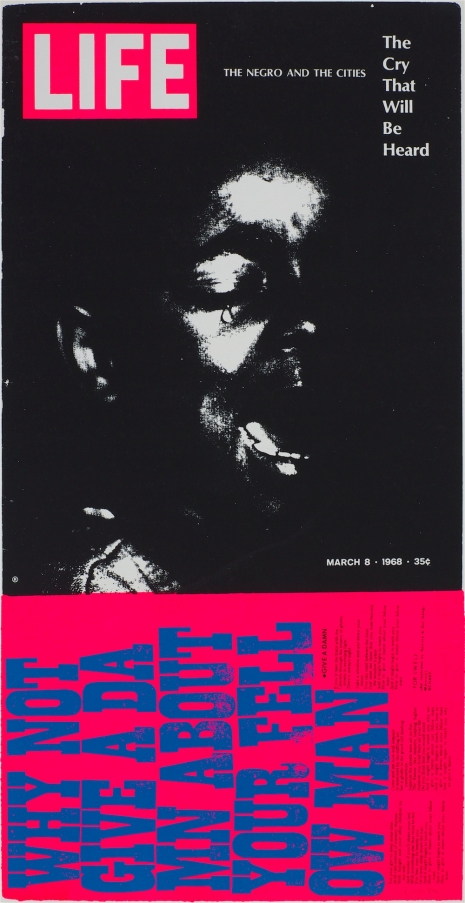
The Cry That Will Be Heard, 1969

American Sampler, 1969
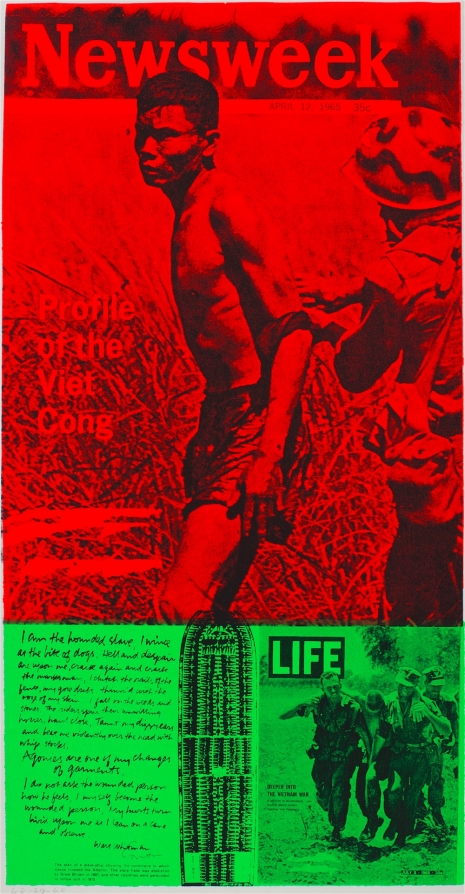
News of the World, 1969
Some intriguing footage of Sister Corita in the studio, taken from Alleluia (1967), produced and directed by Thomas Conrad:
Biographical information for this post comes from A to Z of American Women in the Visual Arts by Carol Kort and Liz Sonneborn.
Previously on Dangerous Minds:
Ian Dury’s pop art paintings
Before Kehinde Wiley, there was Barkley L. Hendricks: magnificent portraits of African-Americans